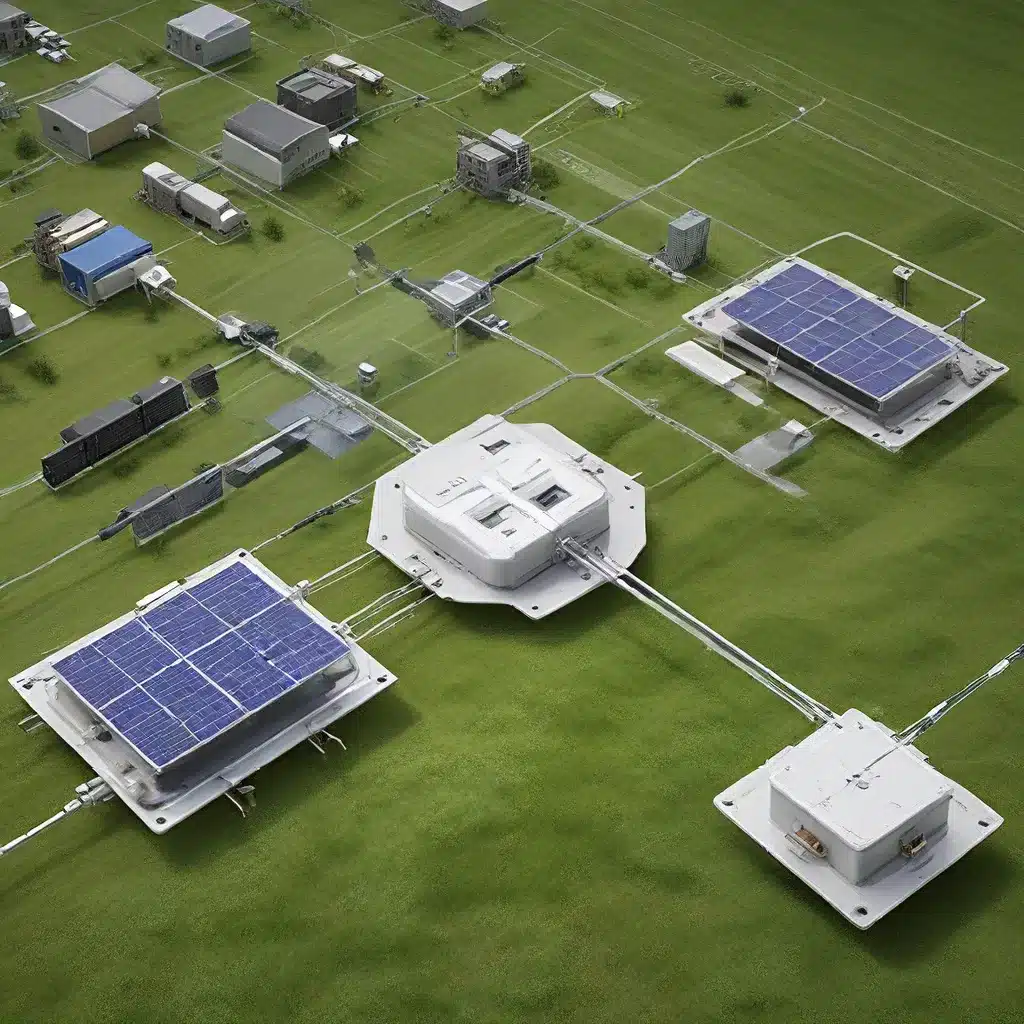
The Evolving Landscape of Sensor Networks and IoT
In the ever-expanding world of sensor networks and Internet of Things (IoT), the demand for sustainable and self-powered solutions has become increasingly crucial. As these technologies continue to revolutionize industries, from smart cities to environmental monitoring, the need for efficient energy management and reliable power sources has emerged as a pressing concern.
Sensor networks have become the backbone of IoT, enabling the collection, processing, and transmission of vast amounts of data from a wide array of sensors. However, the energy requirements of these networks can be a significant challenge, particularly in remote or hard-to-access locations. Conventional battery-powered systems often struggle to meet the ever-increasing demands, leading to the exploration of alternative energy harvesting and storage solutions.
Harnessing Nature’s Abundance: Energy Harvesting Techniques
One of the key advancements in the field of sensor networks and IoT is the development of energy harvesting technologies. These innovative approaches harness renewable energy sources, such as solar, wind, vibration, and thermal energy, to power sensor nodes and network infrastructure.
Solar energy harvesting has emerged as a popular choice, as it leverages the abundance of sunlight in many regions. Photovoltaic cells can be integrated into sensor nodes, converting solar energy into electrical power and reducing the reliance on traditional batteries. Similarly, thermoelectric generators can harvest energy from temperature gradients, making them suitable for applications in industrial settings or harsh environments.
Another fascinating approach is vibration energy harvesting, which utilizes the mechanical energy generated by movement or vibrations to power sensor nodes. This technique is particularly useful in transportation and infrastructure monitoring applications, where the sensor nodes can be strategically placed to capture the energy from vehicle movements or structural vibrations.
Innovative Energy Storage Solutions
Alongside the advancements in energy harvesting, the development of energy storage technologies has played a crucial role in enabling sustainable and self-powered sensor networks. Rechargeable batteries, such as lithium-ion or lithium-polymer, have become standard components in many sensor network systems, providing reliable and long-lasting power.
However, the limitations of traditional batteries, such as limited lifespan, environmental impact, and safety concerns, have driven the exploration of alternative storage solutions. One promising approach is the use of supercapacitors, which offer high power density, rapid charging and discharging, and extended lifespans compared to traditional batteries.
Hybrid energy storage systems, which combine the advantages of batteries and supercapacitors, have also gained traction in sensor network applications. These systems can provide both high energy density and high power density, allowing for efficient energy storage and delivery to meet the diverse requirements of sensor nodes.
Intelligent Energy Management Strategies
To maximize the efficiency and sustainability of sensor networks, intelligent energy management strategies have become essential. These approaches leverage advanced algorithms, machine learning, and real-time data analysis to optimize the energy consumption and power distribution within the network.
Dynamic power management techniques, for instance, can adaptively adjust the operating modes of sensor nodes based on factors such as data transmission requirements, environmental conditions, and energy availability. This ensures that the sensor nodes operate at the most energy-efficient levels, prolonging the overall lifespan of the network.
Furthermore, distributed energy management protocols have been developed to facilitate coordination and resource sharing among sensor nodes, enabling them to collectively manage their energy usage and storage. This collaborative approach enhances the resilience and adaptability of the sensor network, ensuring a more sustainable and self-powered operation.
Sensor Network Applications and the Importance of Energy Solutions
The advancements in energy harvesting, storage, and management have opened up a vast array of opportunities for sensor network and IoT applications. These technologies have the potential to revolutionize diverse industries, from smart cities and environmental monitoring to industrial automation and healthcare.
Sensor networks equipped with sustainable and self-powered solutions can be deployed in remote or hard-to-access locations, enabling continuous data collection and monitoring without the need for frequent battery replacements or external power sources. This is particularly beneficial in environmental monitoring applications, where sensor nodes can be strategically placed to track air quality, water levels, wildlife activities, and other ecological parameters over extended periods.
In smart city environments, self-powered sensor networks can contribute to the development of intelligent transportation systems, smart grid infrastructure, and public safety monitoring, enhancing the overall efficiency and sustainability of urban ecosystems.
Securing the Future of Sensor Networks
As sensor networks and IoT become increasingly ubiquitous, the security and privacy of these systems have emerged as critical concerns. The integration of energy harvesting and storage solutions introduces additional complexities and potential vulnerabilities that must be addressed.
Innovative security protocols and authentication mechanisms have been developed to ensure the integrity and confidentiality of data transmitted by sensor nodes. These solutions leverage encryption, access control, and anomaly detection techniques to mitigate the risks associated with unauthorized access, data tampering, and network disruptions.
Moreover, the energy-efficient nature of sustainable and self-powered sensor networks can contribute to enhanced security by reducing the attack surface and energy-intensive security measures required to protect the network infrastructure.
Conclusion: Towards a Sustainable and Self-Powered Future
The advancements in energy harvesting, storage, and management technologies have profoundly impacted the landscape of sensor networks and IoT. These innovative solutions have the potential to unlock a sustainable and self-powered future, where sensor networks can operate reliably and efficiently in diverse environments, contributing to a wide range of applications that shape our world.
As the demand for smart, connected, and eco-friendly technologies continues to grow, the ongoing research and development in this field will play a crucial role in realizing the full potential of sensor networks and IoT. By embracing these energy-focused innovations, we can ensure a future where sensor networks are not only technologically advanced but also environmentally responsible and energy-efficient.